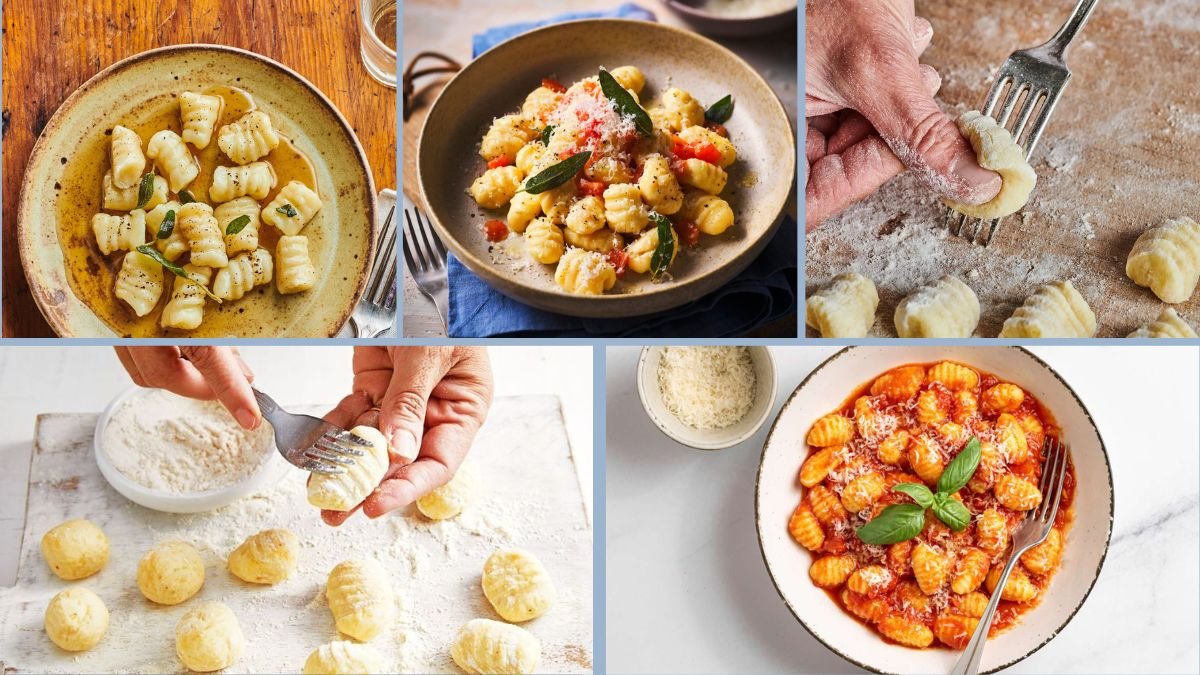Gnocchi, the soft, pillowy dumplings of Italian cuisine, are beloved for their delicate texture and versatility. Traditionally made from potatoes, flour, and sometimes egg, these little pillows can be served with a variety of sauces—from simple olive oil and herbs to creamy, cheesy toppings. While gnocchi may seem intimidating to make at home, mastering them is entirely achievable with attention to ingredient selection, technique, and timing.
The key to perfect gnocchi lies in achieving a light, fluffy texture that melts in your mouth while maintaining a slightly firm bite. Here are seven essential steps to create restaurant-quality gnocchi at home without using any animal products.
Step 1: Select the Right Potatoes
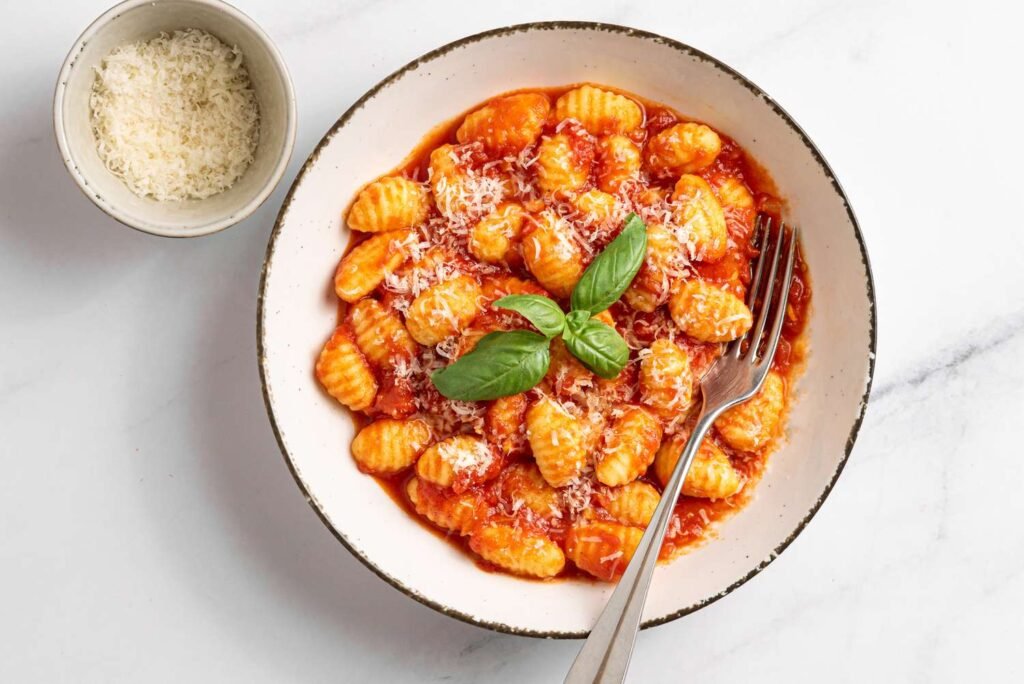
Potatoes are the foundation of gnocchi, and choosing the right type is critical.
- Best Varieties: Starchy potatoes such as Russet or Yukon Gold yield a light, fluffy texture.
- Avoid Waxy Potatoes: Varieties like red or fingerling potatoes hold too much moisture, leading to dense, gummy gnocchi.
- Cooking Method: Bake or steam potatoes rather than boiling to reduce excess water content.
Pro Tip: Bake potatoes wrapped in foil or on a tray at 400°F (200°C) until tender. Let them cool slightly, then peel and mash.
Science Insight: Starchy potatoes have lower moisture content and higher starch concentration, which helps bind gnocchi without making them heavy.
Step 2: Prepare a Smooth Potato Mash
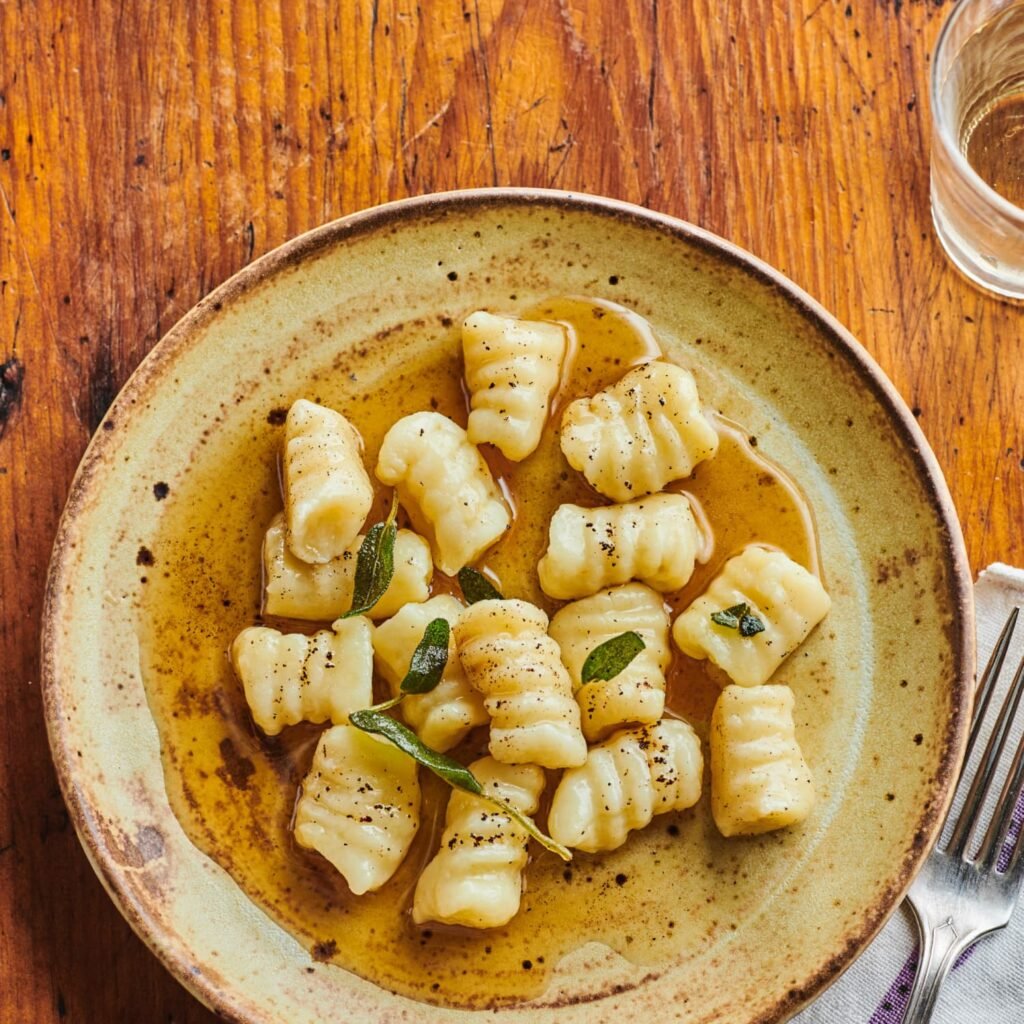
Texture is key for light, tender gnocchi.
- Mashing Method: Use a potato ricer or food mill to create a lump-free mash. Avoid electric mixers, which can overwork the starches and make the dough sticky.
- Seasoning: Add a pinch of salt to enhance flavor.
Pro Tip: Work with warm potatoes to incorporate flour more evenly without overworking the dough.
Culinary Insight: Gentle handling of the mash ensures the starch granules remain intact, producing a light, airy gnocchi texture.
Step 3: Incorporate Flour Carefully
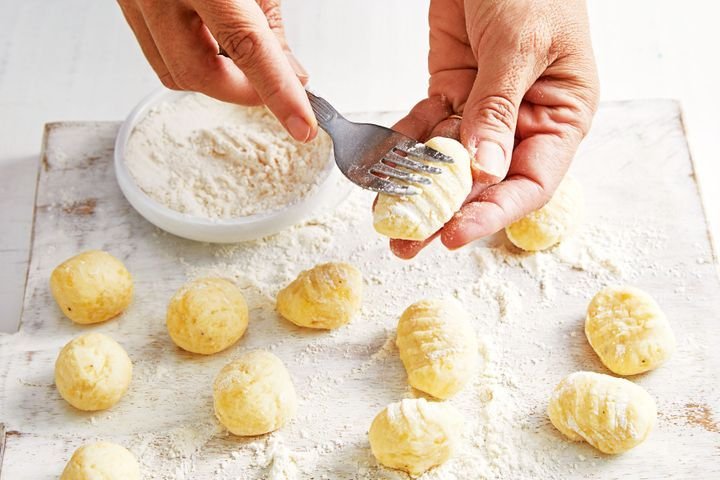
Flour binds the potato into a workable dough.
- Type of Flour: All-purpose flour or a mix of all-purpose and semolina flour provides structure while keeping gnocchi tender.
- Gradual Mixing: Add flour in small amounts to prevent the dough from becoming heavy.
- Avoid Overworking: Knead just enough to bring the dough together; excessive kneading activates gluten, leading to dense gnocchi.
Pro Tip: Aim for a slightly sticky dough that holds its shape. Too dry, and gnocchi will be tough; too wet, and they will fall apart during cooking.
Science Insight: Controlled gluten development ensures gnocchi retain their soft, pillowy texture while holding together in water.
Step 4: Shape Gnocchi Uniformly
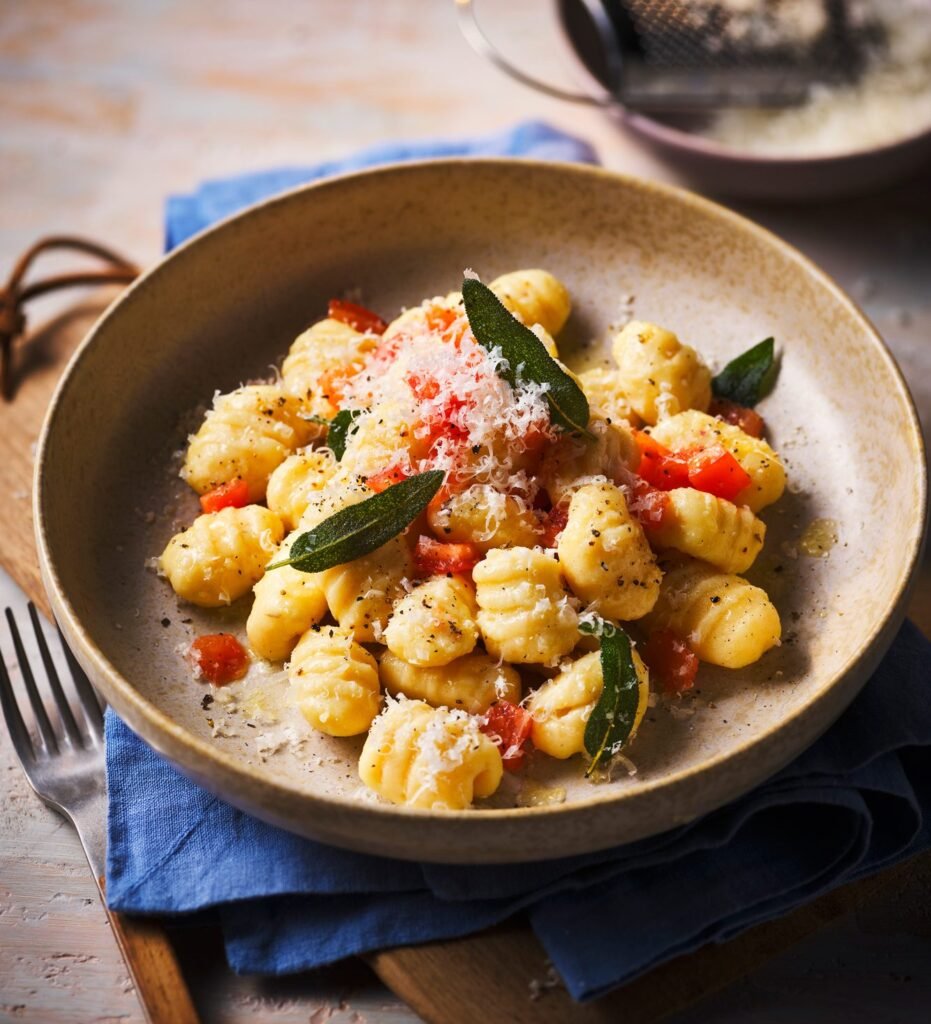
Shaping gnocchi correctly ensures even cooking and appealing presentation.
- Roll and Cut: Divide dough into logs about 1 inch thick, then cut into 1-inch pieces.
- Add Texture: Roll each piece over the back of a fork or gnocchi board to create ridges that hold sauce.
- Size Consistency: Uniform pieces cook evenly, preventing some from being overcooked while others remain underdone.
Pro Tip: Lightly flour the work surface and gnocchi pieces to prevent sticking.
Culinary Insight: The ridges increase surface area, allowing sauce to cling better and enhancing flavor with every bite.
Step 5: Cook Gnocchi Properly
Cooking technique is crucial for light, tender gnocchi.
- Boiling Water: Use a large pot of salted water to prevent sticking.
- Gentle Cooking: Add gnocchi in batches and stir gently. They are done when they float to the surface, typically within 2–4 minutes.
- Avoid Overcrowding: Cooking too many at once lowers water temperature, leading to uneven cooking.
Pro Tip: Scoop floating gnocchi immediately with a slotted spoon and transfer to a warm plate or skillet with sauce.
Science Insight: Boiling water gelatinizes the starch in gnocchi, creating a delicate exterior while keeping the interior soft and tender.
Step 6: Enhance Flavor with Sauce
Sauce complements gnocchi and can elevate it from simple to exceptional.
- Classic Options: Olive oil with garlic and fresh herbs, or a simple tomato-based sauce for a vibrant finish.
- Creamy Alternatives: Use cashew cream, coconut cream, or plant-based butter sauces for richness without dairy.
- Finishing Touch: Fresh herbs, nutritional yeast, or a drizzle of high-quality olive oil adds depth and aroma.
Pro Tip: Toss cooked gnocchi gently in the sauce over low heat to coat evenly without breaking them.
Culinary Insight: Sauce not only adds flavor but also helps keep gnocchi moist, enhancing the overall eating experience.
Step 7: Serve Immediately with Garnishes
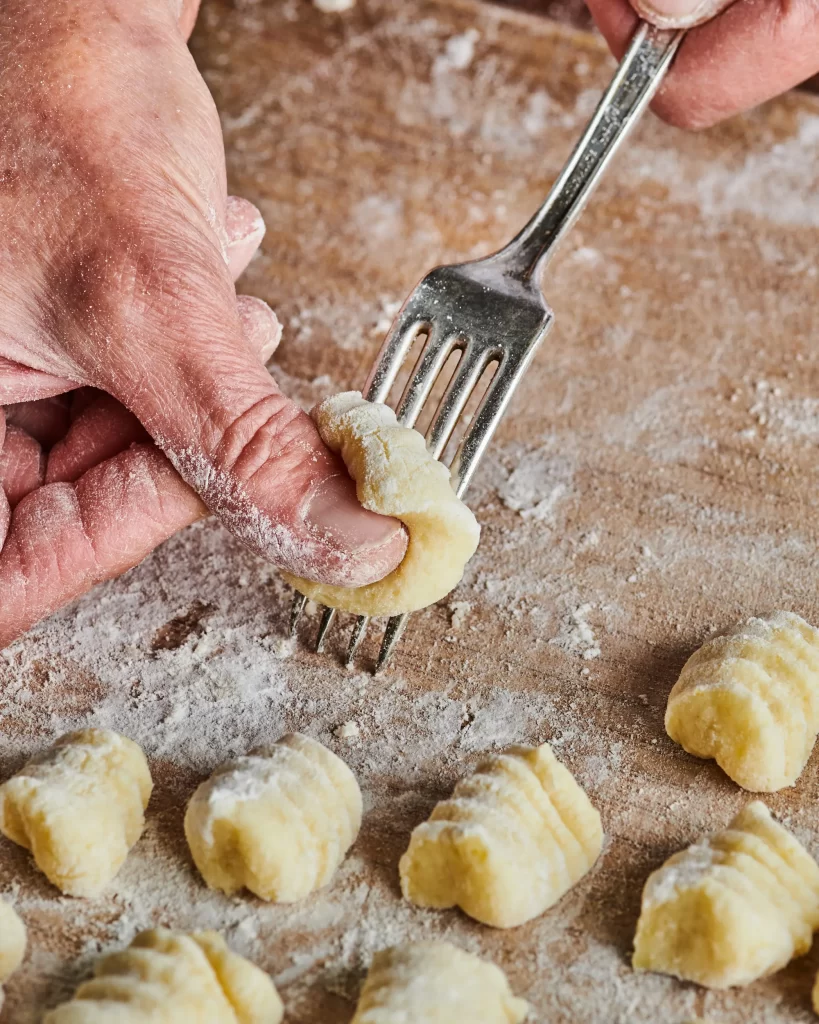
Gnocchi are best served fresh to preserve texture and flavor.
- Timing: Serve immediately after tossing with sauce to maintain their delicate structure.
- Garnishes: Fresh basil, parsley, or microgreens brighten the dish. Toasted nuts or vegan Parmesan can add texture and depth.
- Presentation: Use a shallow dish to showcase the sauce-coated gnocchi and vibrant garnishes.
Pro Tip: Avoid reheating in the microwave, which can make gnocchi gummy; instead, gently warm in a skillet if needed.
Serving Insight: Immediate serving ensures a balance between tender interior and slightly firm exterior, creating a perfect bite.
Bonus Tips for Perfect Gnocchi
- Use Cold or Room-Temperature Ingredients: Warm ingredients can make dough sticky and difficult to handle.
- Work Quickly: Potato dough can become sticky if left out too long.
- Freezing Option: Freeze uncooked gnocchi on a tray, then transfer to a bag for future use. Cook directly from frozen.
- Experiment with Flavors: Add herbs, spinach puree, or roasted pumpkin to the dough for variety.
- Practice Patience: Perfect gnocchi takes practice, but following these steps consistently ensures success.
Conclusion
Perfect gnocchi combines light, tender texture with balanced flavor and visually appealing presentation. By following these seven steps—choosing the right potatoes, preparing a smooth mash, incorporating flour carefully, shaping uniformly, cooking properly, enhancing with sauce, and serving immediately—you can create restaurant-quality gnocchi at home without any animal products.
This vegetarian gnocchi showcases the versatility of plant-based cuisine, demonstrating that simple ingredients like potatoes and flour can be transformed into a luxurious, comforting dish. Whether served as a weeknight dinner, a festive meal, or a creative culinary project, mastering gnocchi allows you to enjoy the charm of Italian cooking in your own kitchen.
With attention to technique, ingredient quality, and careful handling, homemade gnocchi becomes a memorable dish that delights both the eyes and the palate, celebrating the art of simple, plant-based cooking.
